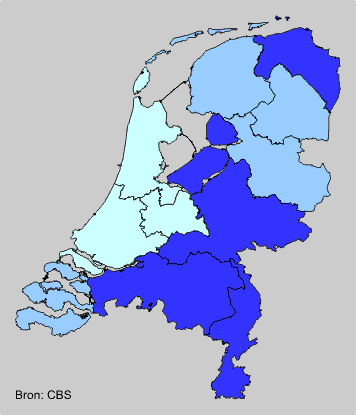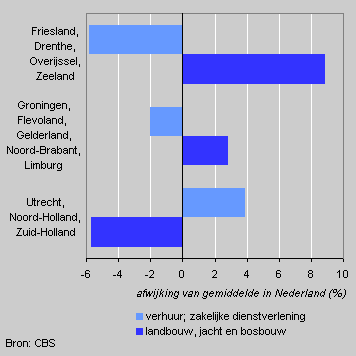Randstad: business centre

The Randstad region in the west of the Netherlands has relatively few farms, but relatively many law firms, administrative offices and consultancies. The economic activities in this region differ strongly from those in other provinces of the Netherlands.
Correspondences
The usual way of dividing the country up into regions is to combine provinces to form four contiguous parts: north, south, east and west. However, if we combine the provinces on the basis of similar economic activities, we get a completely different picture.
This results in three clusters:
- Utrecht, North Holland, South Holland;
- Groningen, Flevoland, Gelderland, North Brabant, Limburg;
- Friesland, Drenthe, Overijssel, Zeeland.
Three clusters of provinces, 2001

Differences with respect to farming and corporate services
The provinces Friesland and North Holland differ most from each other. The Randstad cluster differs considerably from the rest of the country. The differences between the clusters are mainly in the areas of farming and corporate services
The share of farms is small in the Randstad area, while the share of corporate services (lawyers, administrative offices, consultancies etc.) is large. In the cluster consisting of Friesland, Drenthe, Overijssel and Zeeland the situation is precisely the other way around: few business services and many farms. In the third cluster the differences are not so pronounced
Concentration of businesses per cluster of provinces, 2001

Zeeland most distinct
The share of other sectors of industry hardly differs per cluster. A number of these sectors cater for local demand, such as construction and retail trade. The provinces of Groningen, Flevoland, Gelderland, North Brabant and Limburg have the highest number of manufacturing establishments.
Zeeland is the most distinct province, almost constituting a cluster on its own: hotels and restaurants, recreation and fishery accounting for relatively large shares of economic activity in this province.
Wim Kloek